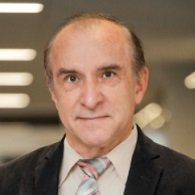New Technologies Based on Stem Cell-Therapies in Regenerative Medicine and Reproductive Biology Ⅱ
A special issue of Cells (ISSN 2073-4409). This special issue belongs to the section "Stem Cells".
Deadline for manuscript submissions: closed (10 January 2023) | Viewed by 2342
Special Issue Editor
Interests: stem cells; male infertility; human genetics; reproductive immunology
Special Issues, Collections and Topics in MDPI journals
Special Issue Information
Dear Colleagues,
This Special Issue is intended to address the background of the modern technology of stem cell identification regarding optimal candidates used to treat respective diseases. This will include the in vitro propagation and identification of stem cells derived from tissue reservoirs; the creation of personally tailored cells from somatic cells through induced pluripotent state (iPS); re-differentiation into the stem cell precursor–progenitor pool; and genetic modifications of stem cells to increase desired capacities, such as pro-angiogenic, pro-regenerative, anti-inflammatory, and anti-fibrotic genes. This would include all technicalities of gene introduction (transient versus stable gene overexpression), and the optimization of promoters, vectors, and imaging systems (singular/double molecular probes). Personally tailoring stem cells through iPS technology would include genetic overexpression, epigenetic strategy, mRNA (including small regulatory molecules), proteins, and small chemical molecules (methylation vs. demethylation). Cell re-differentiation would include cocktails of growth factors, media components, artificial intelligence automatic systems, and accelerated in vitro cell maturation (specifically in the case of muscular components, including skeletal muscles and the heart, as well as cells of the central nervous system). Stem cell delivery is connected to the stem cell monitoring of migratory routes and transitions including the novel instrumentation of live in situ tracking systems, endoscopy, ultrasound, isotopic, and non-isotopic detection methods. Stem cell retention in target organs would require chaperones for the accompanying stem/progenitor cells, gradient creation when using an interplay of receptors with chemokine attraction molecules, and adjuvating medicines provided by nanotechnological means as nanocapsules with self-degrading properties that are resistant to a pro-inflammatory milieu, while demonstrating stimulating properties to stem cell action. Papers that focus on materials, nanomaterials, and scaffolds in combination with both cell retention issues and adaptation to the microenvironment and organ specificity are welcome. We are seeking papers dealing with immunomodulatory properties towards stem cells, acceptance in immunoprivileged sites as a part of protocol optimization depending on the demand of the target organ, and organoids from the perspective of future stem cell technology and 3D organ architecture to establish a futuristic view of organ replacement.
Prof. Dr. Maciej Kurpisz
Guest Editor
Manuscript Submission Information
Manuscripts should be submitted online at www.mdpi.com by registering and logging in to this website. Once you are registered, click here to go to the submission form. Manuscripts can be submitted until the deadline. All submissions that pass pre-check are peer-reviewed. Accepted papers will be published continuously in the journal (as soon as accepted) and will be listed together on the special issue website. Research articles, review articles as well as short communications are invited. For planned papers, a title and short abstract (about 100 words) can be sent to the Editorial Office for announcement on this website.
Submitted manuscripts should not have been published previously, nor be under consideration for publication elsewhere (except conference proceedings papers). All manuscripts are thoroughly refereed through a single-blind peer-review process. A guide for authors and other relevant information for submission of manuscripts is available on the Instructions for Authors page. Cells is an international peer-reviewed open access semimonthly journal published by MDPI.
Please visit the Instructions for Authors page before submitting a manuscript. The Article Processing Charge (APC) for publication in this open access journal is 2700 CHF (Swiss Francs). Submitted papers should be well formatted and use good English. Authors may use MDPI's English editing service prior to publication or during author revisions.
Keywords
- stem cell tissue reservoir
- personally tailored stem cell interventions
- stem cell genetic modifications
- molecular reporters and cell tracking
- cell delivery and organ retention
- nanotechnological means to support stem cells action
- scaffolds
- organoids






